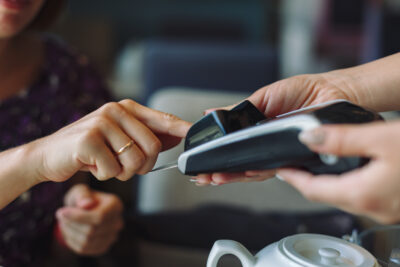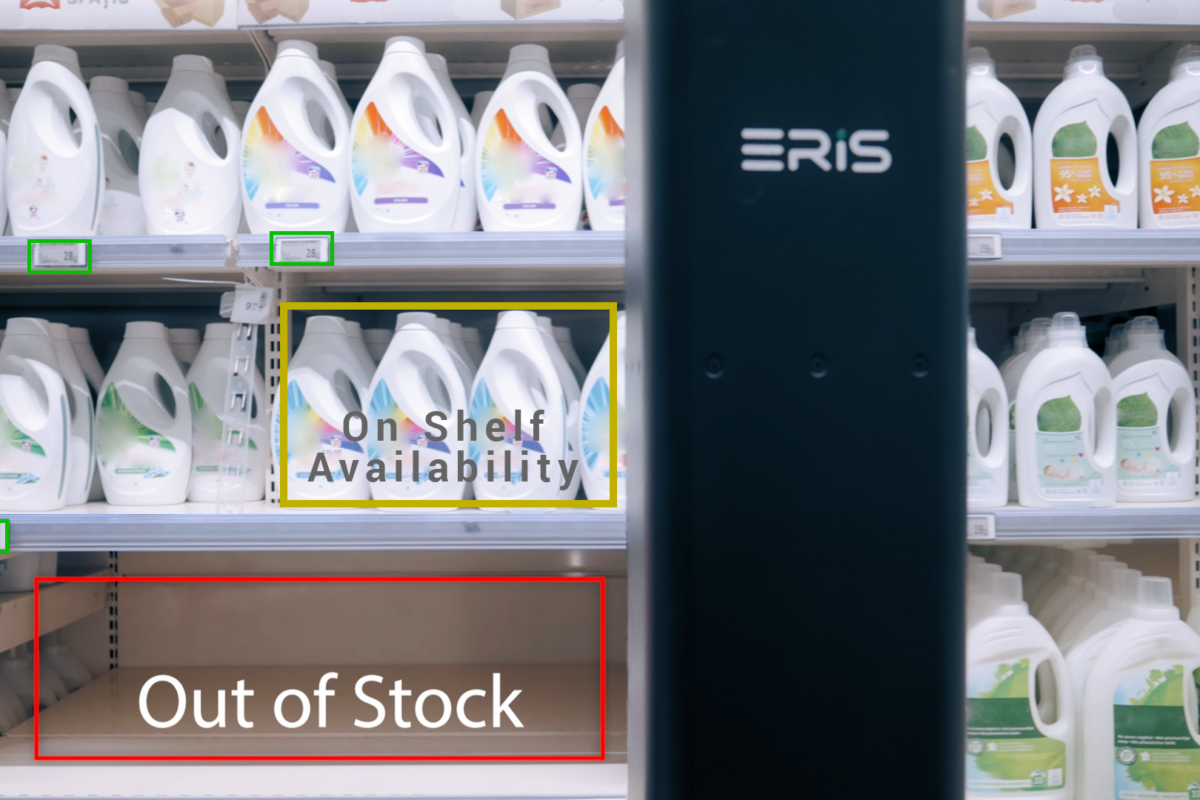Innovative payment methods on the rise
by Katja Laska (exclusively for EuroShop.mag)
Americans and Scandinavians have been on to this trend for a long time. By 2020, Germans had also finally caught up: consumers there are no longer quite as much in love with cash as they used to be. Electronic, contactless payment systems are gaining in popularity. Now many payment solution providers are taking things a step further and are venturing into biometric payment options. What is happening on the market right now?
Recording your identity card (German: Personalausweis) and face – the latter step completes the so-called selfie identification process offered by Germany’s Telekom to digitally establish the identity of its customers. The liveness check and identity documents are automatically compared with the help of artificial intelligence. If they match, the registered customer can log in and access the services of the German telecommunications company.
A great tool to manage customer accounts is also a great way to pay for purchases. The fact is that contactless payments are becoming increasingly popular. A Mastercard study from the first quarter of 2020 surveyed consumers in 19 countries around the world. 79 percent of respondents indicated they are now using contactless payments, citing safety and cleanliness as key drivers. The use of additional biometric modalities promises to ensure the former. A person’s voice, iris or fingerprint are viewed as unmistakable, ensuring that innovative payment methods increase security and prevent fraud, which is why payment solution providers are increasingly relying on them.
“How would you like to pay: Using your fingerprint, palm or facial recognition?”
Fingerprint

©KonstantinKolosov
Samsung recently announced its collaboration with Mastercard on a biometric scanning payment card with a built-in fingerprint reader. Instead of entering a pin, it will be sufficient to place a finger on a provided field to verify the owner of the card and complete the purchase. The card will adopt security chips made by Samsung’s System LSI Business. Printed by Samsung Card, the biometric card can be used at any Mastercard chip terminal or point of sale (POS) terminal. The rollout is planned in South Korea for later in 2021. The French bank BNP Paribas also explores a solution in this area and is set to begin issuing biometric payment cards to all its Visa customers in 2021.
Palm
Since last fall, e-commerce juggernaut Amazon has been foregoing credit card payments at two of its Amazon Go stores in Seattle. Customers only need their palm to pay with the Amazon One biometric system of authentication. More specifically, customers can use Amazon One as an entry option at these stores. The first step is to insert their credit card in the terminal. Next, they hover their palm over the device to scan their hand from above. They then follow the prompts to digitally link the card and the handprint. This takes about a second or so, at which point customers can enter and leave once they are done with their shopping. Payment is made via the credit card on file, which the system pulls up via the scan. For data security reasons, no palm image proffered for use is ever stored on the Amazon One device. The data is encrypted in a secured sector of the cloud that was custom built by Amazon and can be retrieved at the customer’s next visit. Incidentally, customers don’t need an Amazon account to use this service, only a mobile phone number and credit card.
Facial recognition

Face_Pay_China_Biometric
Facial-recognition payment via biometric identification is commonplace in cities across China. There are two major payment services: The first one is multinational technology conglomerate Tencent’s messaging app WeChat, which showcases a new payment device, the “Frog Pro”. The system allows customers to make payments via the payment method on file at WeChat by simply scanning their face. The other service is Alipay’s Dragonfly facial recognition-powered point-of-sale system. The device provides 3D face scanning using artificial intelligence. The face recognition algorithm accurately measures the 3-dimensional information of human faces such as the depth of the face and the height of the nose. Alipay uses several hundred facial features to guarantee accurate detection.
It works like this: Customers store their photo ID in the system prior to use. Upon looking directly at the scanner, the AI then scans the face of the customer and matches the biometric data. Next, the customer is asked to enter the phone number that is linked to the Alipay account to pay. The benefit for regular patrons: the facial recognition-powered point-of-sale system can “remember” them. This allows retailers to work with loyalty programs. The payment process also becomes much simpler: the customer no longer has to authorize the payment via mobile phone after the first use. Identification and payment are automatically completed in seconds after the facial scan. Both payment platforms are currently available in hundreds of retail chains in China. Fast food giants like KFC are also using this technology.
Fast and simple, but are they secure?
Fast, simple, and secure – that is the promise of biometric solutions. Especially the latter aspect has been a sticking point when it comes to facial recognition. Some fear a risk of identity theft and worry that third parties might try to trick the system by stealing a photo of another person and holding it in front of the camera or screen to make online payments. Yet the manufacturers say they are prepared for this. Dragonfly can detect whether the person is real and reject a 2D image. The software is programmed to detect liveness such as blinking or head movement.
Data protection is also a recurring issue. The scans could enable the government and private companies to build up a large biometric database that could be used for other purposes. The technology has become part of the fabric of life in China and is already applied when people enter office buildings, sign a new mobile phone contract, or check in at the airport. Facial recognition payment systems could just be another step in this direction. It remains to be seen whether this type of technology will become mainstream in other countries.
Despite concerns and different standards across countries, one thing is becoming clear: besides credit card and mobile payments, the future belongs to these types of payment solutions, because they cater to customer desires for convenience and added benefit. The trend is likely here to stay.




















